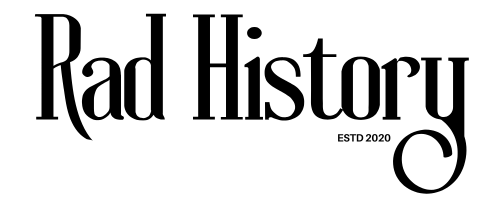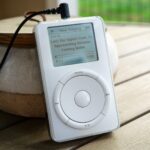Are you exhausted, unmotivated, and weirdly numb—and wondering if it’s burnout, depression, or just modern life doing its thing again? A growing number of millennials are wrestling with a blurry emotional landscape where “just tired” shades into “deeply unwell,” and even therapists sometimes need time to tease apart the causes.
Burnout and depression have overlapping symptoms, from exhaustion to disengagement to that lovely “everything feels like molasses” vibe. But they’re not the same thing—and mistaking one for the other can delay meaningful recovery.
This confusion isn’t accidental. It’s baked into the culture of overwork, chronic stress, and gig-economy hustle, where being tired is a status symbol and saying “I’m fine” is code for “everything’s on fire, but I don’t have time to talk about it.”
So how do you tell what’s really going on?
What Burnout and Depression Have in Common
Let’s start with the overlap. Both burnout and depression can leave you feeling a few ways.
- Exhausted no matter how much you sleep
- Uninterested in things you used to enjoy
- Foggy, forgetful, or unable to concentrate
- Detached or emotionally blunted
- Cynical or hopeless
- Prone to physical issues like headaches or digestive trouble
These symptoms show up whether you’re struggling under a crushing workload, losing your sense of purpose, or navigating something more clinical.
Burnout can be a gateway to depression. And depression can look a lot like burnout—especially if your job, life, or relationships are already pushing you to the edge.
The Core Difference: Source vs. Scope
The easiest way to separate burnout from depression? Look at the scope of the symptoms.
- Burnout is generally tied to your work or a specific role (like caregiving). It’s situational. You might feel awful from 9 to 5, but rally enough energy to binge-watch a series at night or hang out with a friend on Saturday.
- Depression tends to be global. It colors everything. The fatigue, disinterest, and flatness don’t go away when you log off or take a vacation. Even rest doesn’t feel restorative.
If burnout is a fire alarm going off in one room, depression is like a power outage in the whole house.
Why Millennials Are Especially Vulnerable to the Blur
Millennials didn’t invent burnout, but we’ve absolutely given it a rebrand. Raised on the promise that passion should lead to purpose (and a paycheck), many millennials tied their identities to their jobs. Add in a few other variables.
- Student loan debt
- Sky-high housing costs
- No real separation between work and life (hello, smartphones)
- Hustle culture that celebrates being busy over being well
…and it’s no surprise that we don’t always know when we’re simply overworked versus seriously unwell.
Also: Millennials grew up in a cultural moment that normalized stress but often stigmatized mental illness. It’s easier—and more socially acceptable—to say you’re “burned out” than “depressed.”
Red Flags It Might Be Depression
If you’re not sure what you’re experiencing, mental health professionals suggest watching for these signs that go beyond burnout.
- Persistent low mood that doesn’t lift, even with rest or breaks
- Loss of appetite or significant weight changes not tied to lifestyle shifts
- Feelings of worthlessness or guilt that feel disproportionate
- Sleep disruptions—either insomnia or sleeping too much—that continue for weeks
- Thoughts of self-harm or wishing you didn’t wake up
These aren’t just signs you need a long weekend. They’re signals to talk to a professional.
What Actually Helps (Hint: It’s Not Just a Bubble Bath)
Self-care is great. But when it comes to burnout or depression, there’s no one-size-fits-all fix. The solution depends on what you’re dealing with.
If it’s burnout.
- Setting boundaries around work—say no more often, and stop answering emails at midnight
- Taking real breaks, not just scrolling TikTok between Zoom calls
- Reconnecting with meaning, whether through hobbies, people, or volunteering
- Talking to your manager (if safe) about your workload
If it’s depression.
- Therapy (CBT, talk therapy, or others)
- Medication, especially if symptoms persist beyond a few weeks
- Routine and structure, even if it’s just a daily walk or regular meals
- Social connection, even when you don’t feel like it
And sometimes it’s both. In that case, the first step is admitting you’re not okay—and that it’s valid to need help, even if you “should be grateful” or “have it better than others.”
The Rise of the “Functional” Crisis
Another wrinkle in the burnout-vs-depression debate is the rise of high-functioning depression. That’s when people keep showing up—at work, in relationships, on social media—while feeling hollow inside. It’s depression that wears a blazer and smiles in meetings.
Millennials are particularly good at faking normal. They’ve had practice. But over time, masking takes a toll.
The risk here is that you—or the people around you—won’t recognize what’s happening until the wheels fall off. And then it’s not just burnout. It’s a breakdown.
When to Get Help
You don’t need to hit rock bottom to justify seeking support. If something feels off for more than a couple of weeks, and it’s interfering with your ability to enjoy or function in life, that’s reason enough.
- Talk to a therapist or primary care provider
- Use online mental health screenings (like those from Mental Health America)
- Tell a friend or loved one what you’re experiencing
If you’re unsure whether it’s burnout or depression, a mental health professional can help you figure it out—and more importantly, help you heal.
What Happens When We Normalize the Wrong Thing?
There’s a cultural cost to confusing burnout with depression. If we treat depression like a time-management problem, people don’t get the clinical care they need. If we treat burnout like a mental illness, we risk medicalizing what might actually be a toxic workplace issue.
The answer isn’t to pick one over the other. It’s to listen to the symptoms and investigate the source. The only way out is through—and ideally, with a better understanding of what’s breaking us.
Relearning What “Fine” Really Means
Burnout and depression both flourish in silence. They thrive in cultures that reward performance over presence and hustle over health.
But there’s a quiet rebellion in stopping to ask, “Am I actually okay?”
The lines between burnout and depression might be blurry, but the need for clarity is urgent. Reclaiming your mental health starts with realizing that “fine” isn’t a personality—and that chronic exhaustion isn’t a badge of honor.
Getting curious about how you’re really doing might be the most radical, and restorative, thing you do this year.








